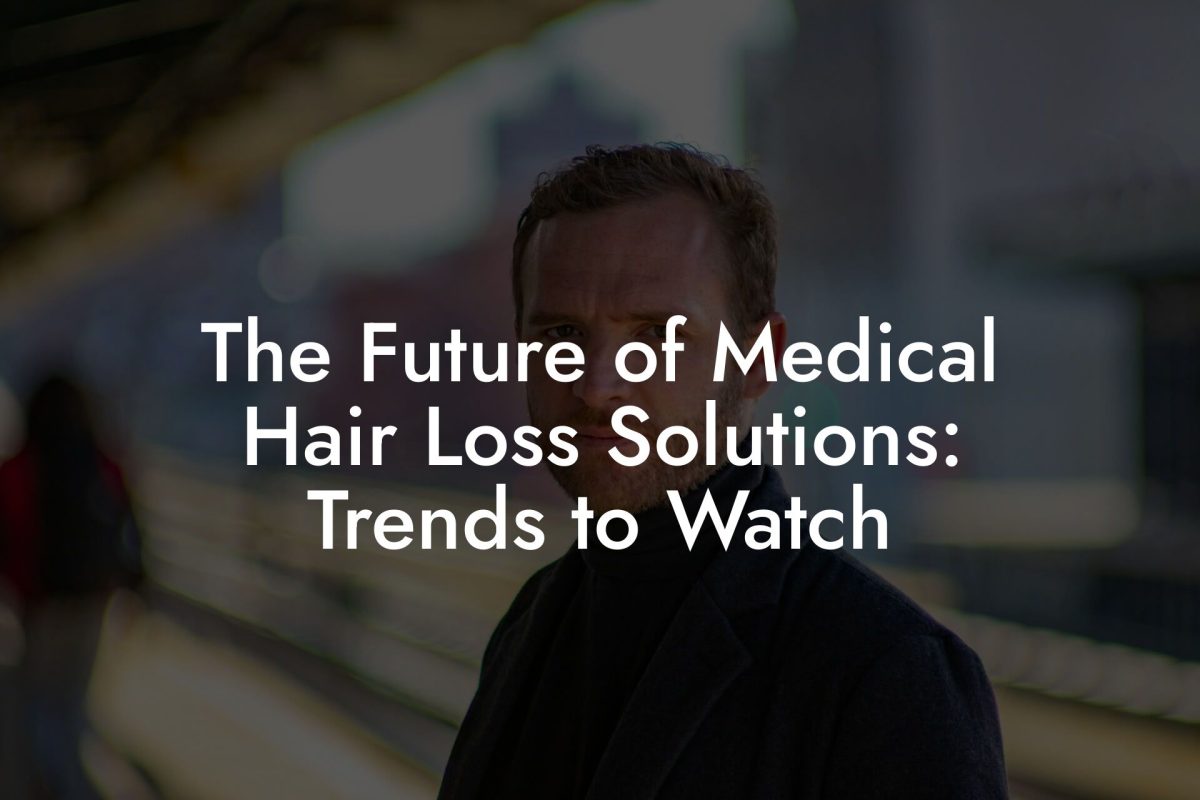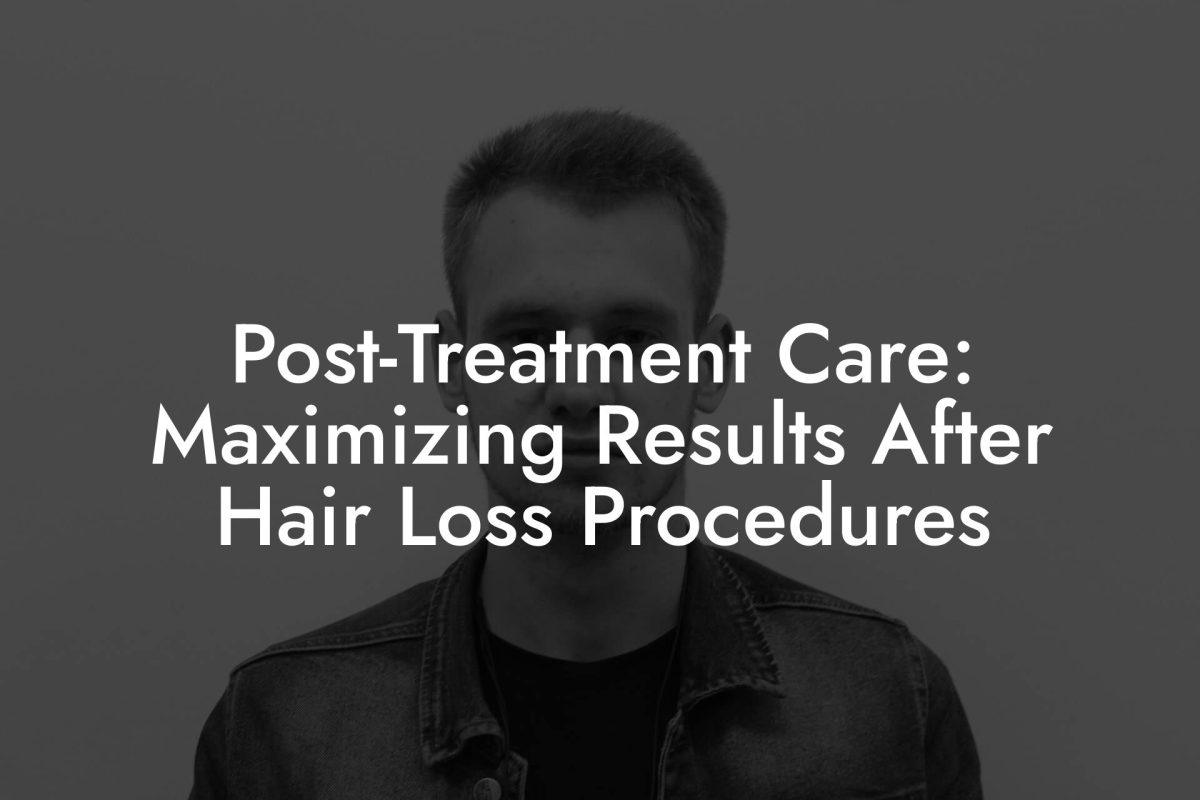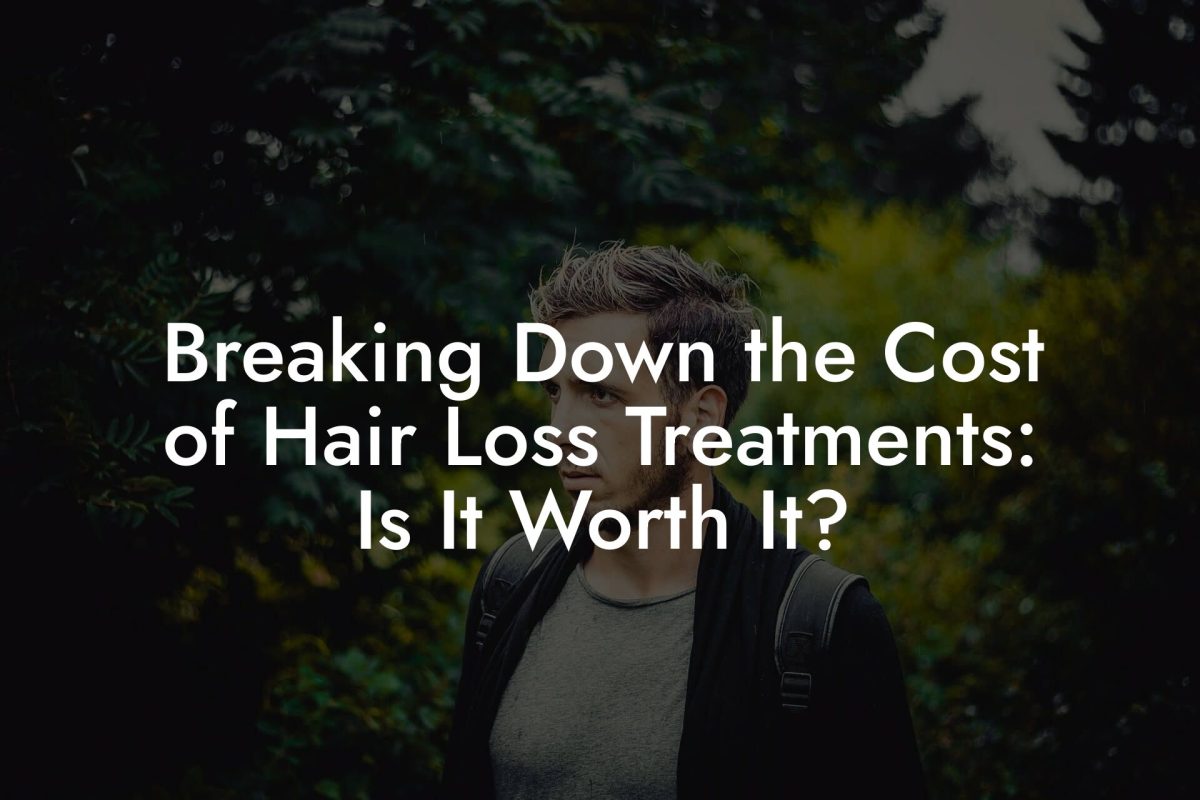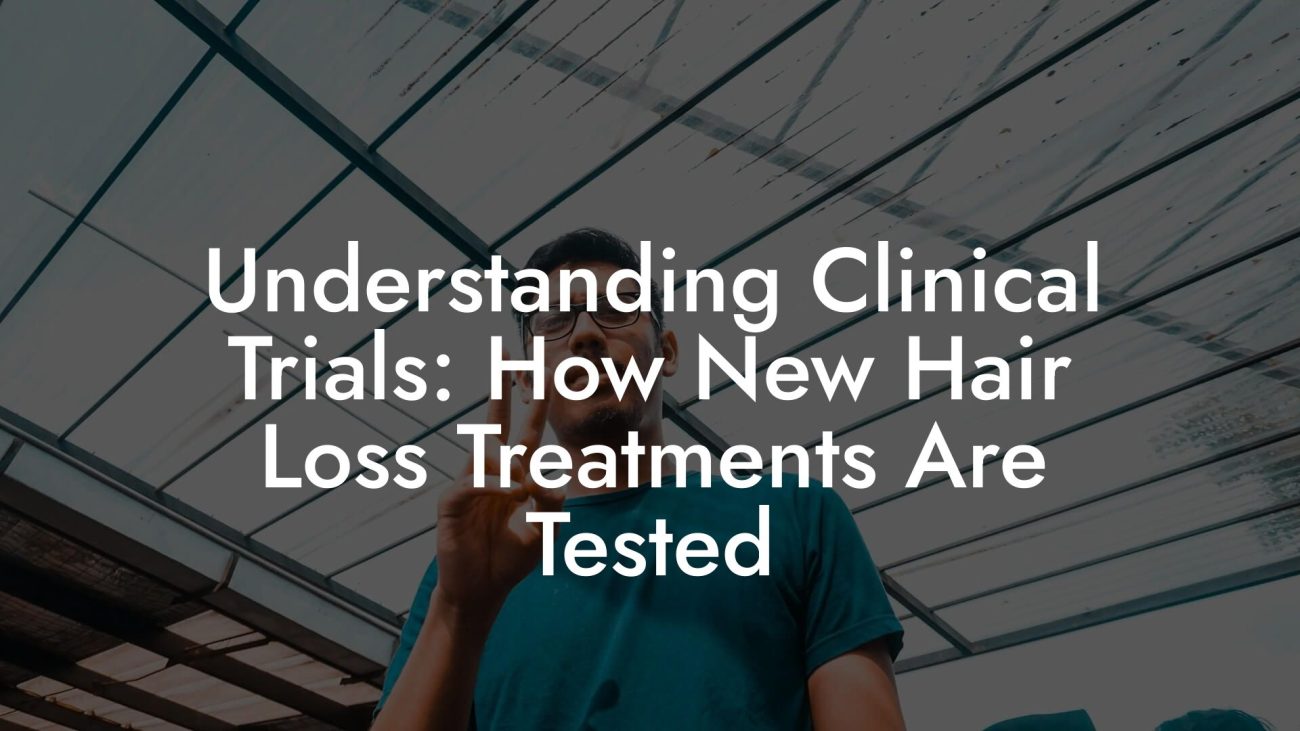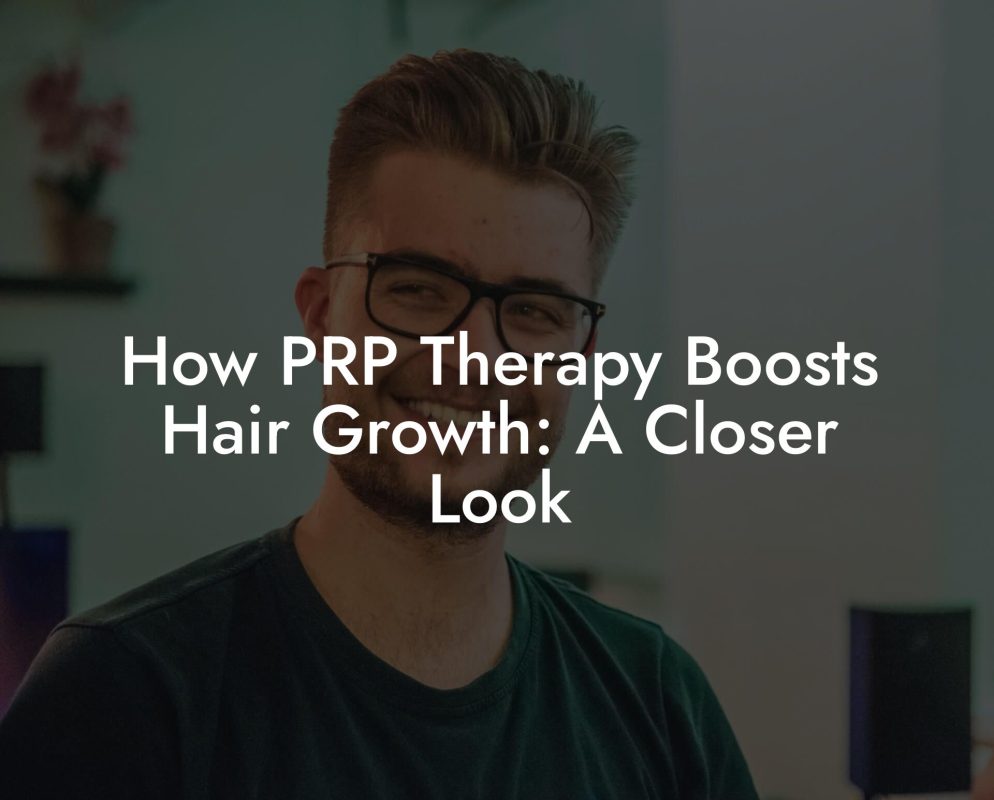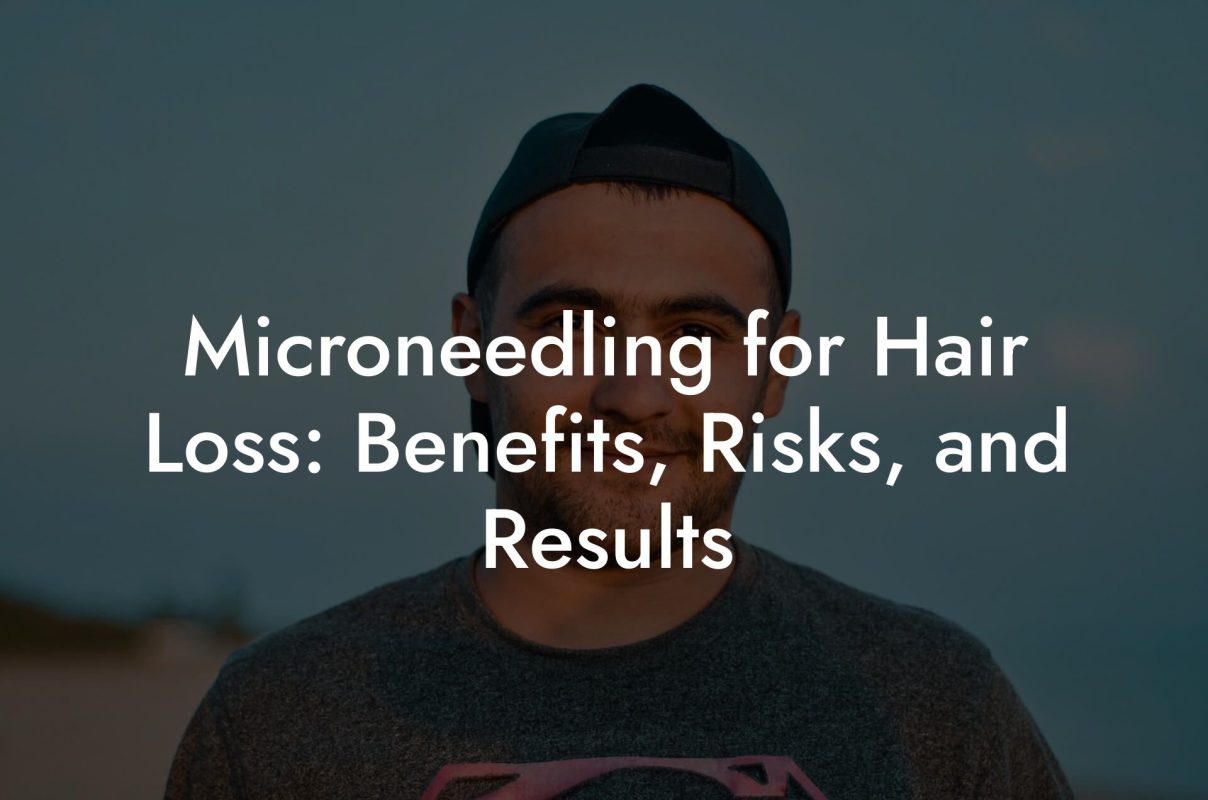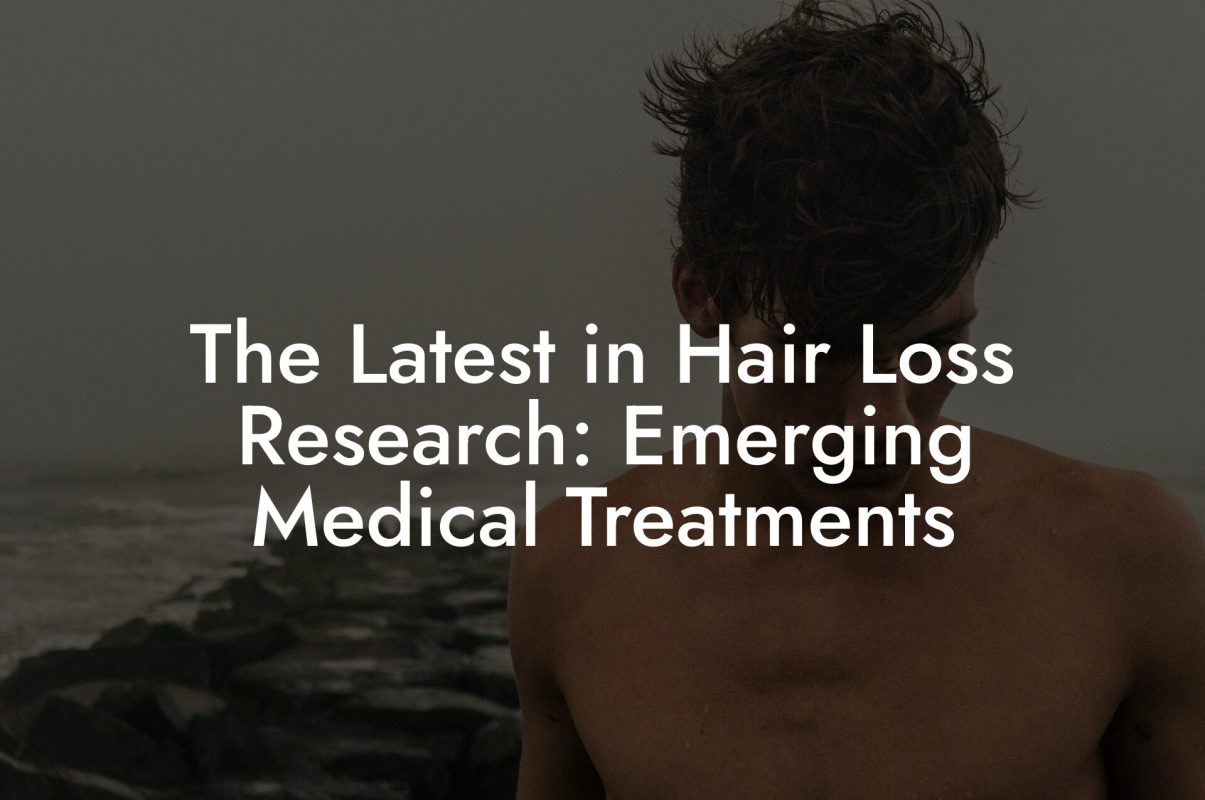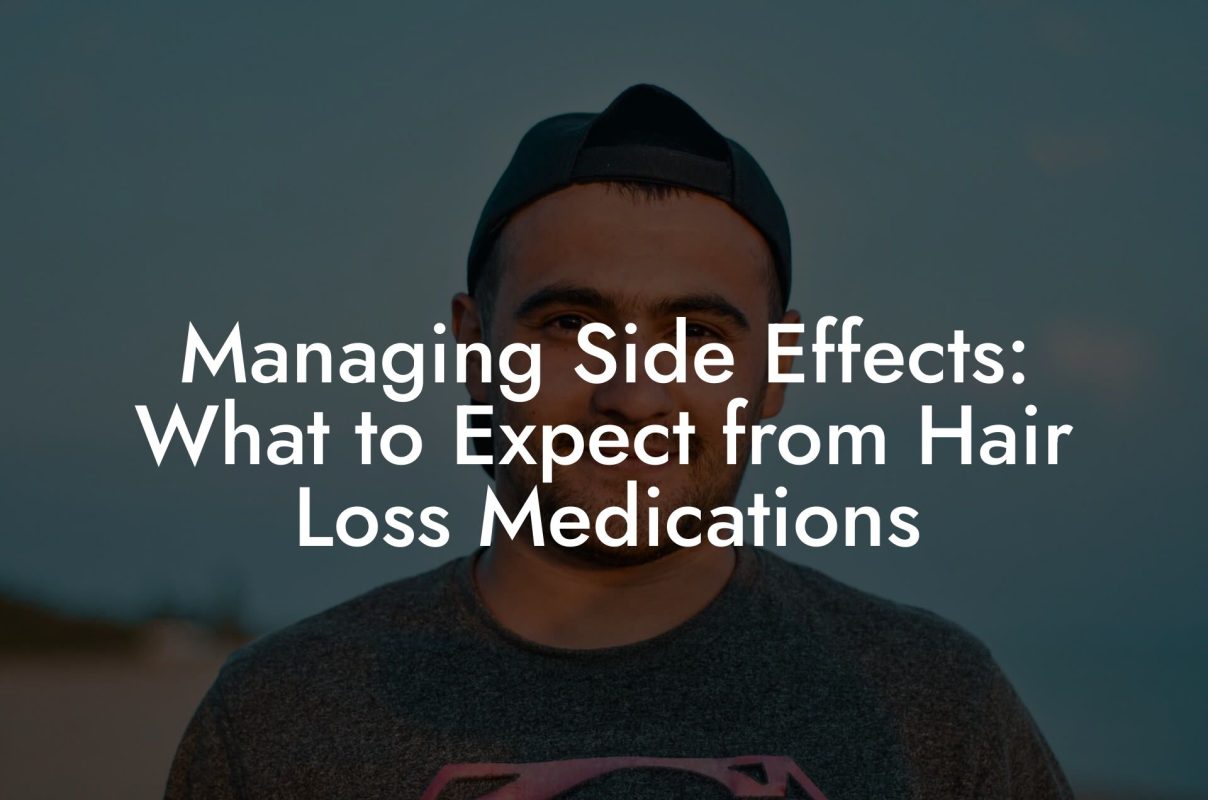Hair Loss Library
A Doctor’s Perspective: When to Consider Medical Hair Loss Treatments

Picture this: you’re scrolling through Insta, rocking your favorite beanie, when you suddenly notice a little extra forehead showing through your hairline—yikes! As a doctor with a penchant for both science and dad jokes, I’m here to tell you that hair loss isn’t just a “midlife crisis” drama. It’s a conversation starter between genetics, hormones, and the modern-day hustle. Welcome to "A Doctor’s Perspective: When to Consider Medical Hair Loss Treatments", your no-nonsense, laugh-filled guide to understanding when your mane deserves a medical upgrade. Here at Mane Matrix, we cut through the fluff (pun totally intended) and deliver straight-up expert analysis without the awkward consultation fees or cringe-worthy appointments.
The Science (and Quirk) Behind Hair Loss
Before diving into the white-coat world of medical treatments, let’s break down why many of us end up with a hairline that slowly retreats like it’s trying to avoid commitment. Hair loss in men, primarily androgenetic alopecia (often called male pattern baldness), is mostly driven by the dynamic duo of genetics and hormones. Simply put, if your granddad started losing hair in his 40s, chances are you might too—thank you, inheritance!
But don't despair—this isn’t a one-way ticket to baldness-ville. Today’s hair loss landscape is filled with options ranging from time-tested medications to innovative procedures that promise to help you keep that luscious head of hair (or at least maintain a respectable amount). Understanding the underlying causes can empower you to make the best choice for your hair’s future.
And let’s be real: while some might embrace the “bald is beautiful” mantra, others are still on the lookout for solutions reminiscent of a 90s hair commercial. Which path to choose? That’s where a doctor’s perspective comes in handy, giving you the lowdown on what treatments really work, who should consider them, and when it might be time to get serious about hair restoration.
When Should You Consider Medical Hair Loss Treatments?
So, you’re wondering if your receding hairline deserves some professional attention. Here’s the scoop: the decision to delve into medical hair loss treatments isn’t about vanity—it's about confidence, self-care, and sometimes, an overwhelming desire to reclaim a piece of your youthful swagger. But when should you actually consider taking action?
Signs That It Might Be Time to Seek Treatment
There are a few telltale signs that your hair might be giving you the silent “help me” message:
- Noticing a Rapid Change: If your hair seems to be vanishing at a rate that could give your favorite Netflix series a run for its money, it's time to consider professional input.
- Your Part Is Getting Deeper: When your styling game starts revolving around clever parting techniques rather than just letting nature take its course, medical advice might be well worth it.
- Family History Woes: A strong family trend of thinning hair increases your odds. If your dad and grandpa both embarked on the “less is more” hair journey early, you might be next in line.
- Low Self-Confidence Levels: While embracing baldness can be empowering for some, if you’re feeling less like the hero of your own story and more like you’re stuck in a rerun, then maybe a boost would help.
- Professional or Social Concerns: In careers or social settings where appearance matters, unexplained or worsening hair loss may be a sign to consider medical hair loss treatments.
The transition from “it’s just hair” to “this is affecting my vibe” is subtle yet profound. No matter where you stand on the hair loss spectrum, understanding your options can help you decide whether to rock the crown of wisdom or pursue treatment.
Medical Treatments: The Foundations of Hair Restoration
Medical hair loss treatments have come a long way since the days of questionable serums and bizarre remedies whispered about in the corridors of barbershops. Today, treatments are evidence-based, proven, and endorsed by science (and yes, by a few cool cats in white coats). Let’s break down some of the most common medical options:
1. FDA-Approved Medications
For decades, two medications have led the charge in the fight against hair loss:
- Finasteride (Propecia): This oral prescription medication works by inhibiting the conversion of testosterone into dihydrotestosterone (DHT), the hormone largely responsible for hair follicle shrinkage. Studies have shown that Finasteride can halt hair loss and even stimulate regrowth in some men.
- Minoxidil (Rogaine): Available over the counter, this topical solution stimulates hair follicles by increasing blood flow and prolonging the growth phase of hair. It’s a favorite for its ease of use and visible results within a few months—if you’re patient enough for a bit of the new-hair waiting game.
Both of these options have been battle-tested and are well-regarded in the medical community. They’re fantastic starting points if you’re noticing early signs of hair loss and want to delay the progression.
2. Low-Level Laser Therapy (LLLT)
Imagine a futuristic gadget that uses light to stimulate your scalp. That’s exactly what low-level laser therapy promises—a non-invasive, pain-free treatment that increases cellular activity in hair follicles. LLLT devices come in various forms like combs, helmets, or caps, and they’re designed to boost hair density over time.
Research into LLLT is still emerging, but early results are promising, and many men find the idea of a “laser workout” for your scalp to be both cool and effective.
3. Platelet-Rich Plasma (PRP) Injections
PRP treatment sounds like something out of a superhero lab, and in a way, it is. In this procedure, a small sample of your blood is spun in a centrifuge to concentrate the platelets; these are then injected back into your scalp where they release growth factors to rejuvenate hair follicles. PRP can reduce hair loss and even promote regrowth for some individuals.
While the idea of getting “spiked” with your own blood may raise a few eyebrows, the scientific community supports the use of PRP as a valuable tool in hair restoration.
4. Hair Transplant Surgery
When medications and non-invasive treatments aren’t enough, hair transplant surgery steps in as the heavyweight champion of hair restoration. There are two primary techniques:
- Follicular Unit Transplantation (FUT): In FUT, a strip of scalp is removed from an area with dense hair, and the follicular units are extracted and transplanted to the thinning areas.
- Follicular Unit Extraction (FUE): FUE involves individually extracting hair follicles from the donor area and transplanting them. This method leaves minimal scarring and is preferred by many for its precision.
While surgical options are more invasive and require a recovery period, they offer permanent, natural-looking results that many men find to be well worth the investment.
Modern Innovations and Emerging Therapies
Just when you thought the world of hair restoration couldn’t get any cooler, modern innovations have entered the fray. New technologies are transforming the way we approach hair loss, blending conventional medical expertise with the latest in tech-driven treatments.
Stem Cell Therapy
Stem cell therapy is making waves as a potential breakthrough in regenerative medicine. Although still under active research, this approach involves using stem cells to stimulate new hair growth by encouraging the regeneration of dormant hair follicles. The idea of using your body’s own “construction workers” to rebuild your hair is as fascinating as it is promising.
Customized Genetic Testing
Ever wish you could peek into your genetic blueprint to predict future hair loss? Genetic testing is now entering the mainstream. Through a simple saliva test, you can get a detailed picture of your predisposition to hair loss, allowing for a truly personalized treatment plan. Not only does this empower you with knowledge, but it also helps your doctor recommend the most effective treatments tailored to your genetic profile.
Combination Therapies
The future of hair restoration isn’t about one miraculous treatment—it’s about combining the best that modern medicine has to offer. Imagine a regimen that includes both Finasteride and Minoxidil, complemented by periodic PRP injections and occasional LLLT sessions. These combination therapies can provide a synergistic boost, ensuring that you’re not leaving any follicle behind in your fight against hair loss.
With advances in treatment protocols, many clinics now offer comprehensive plans that integrate multiple therapies to maximize effectiveness. The key is customization—what works for one person might not work for another, so working with a skilled practitioner is essential.
Navigating the World of Hair Loss: Approaches Beyond Medicine
While medical treatments are front and center, there’s a parallel universe dedicated to complementary approaches that can work wonders when paired with traditional care. Think of these as the supportive cast in your hair restoration blockbuster.
Nutritional Support
Yes, your dinner plate can be a secret weapon! Nutrients like biotin, zinc, vitamin D, and iron are crucial for maintaining healthy hair. Incorporating a balanced diet, including lean proteins (hello, grilled chicken and legumes) and plenty of fruits and veggies, can improve hair strength from within. And for those days when your grocery run feels like a chore, nutritional supplements can help bridge the gap.
Scalp Care and Massage
A little TLC for your scalp can go a long way. Regularly massaging your scalp not only feels great (hello, DIY spa day) but also enhances blood circulation, ensuring that your hair follicles get a steady supply of nutrients. There are plenty of scalp care products that claim to cleanse, exfoliate, and nourish your skin. Experimenting with these, while keeping a light-hearted spirit about the process, can boost both scalp health and your mood.
Stress Reduction Techniques
It might sound like a plot twist, but stress plays an underhanded role in hair loss. Chronic stress can trigger telogen effluvium—a condition that pushes hair into a resting phase, leading to increased shedding. Incorporating stress reduction techniques such as mindfulness meditation, yoga, or even a good ol’ fashioned walk in nature can help balance out your hormones and, in turn, support healthy hair growth.
Think of these holistic approaches as the cherry on top of your treatment regimen. They may not replace medical treatments, but they certainly provide support on the path to a healthier scalp and a more confident you.
Creating Your Personalized Hair Loss Treatment Plan
One size definitely does not fit all when it comes to managing hair loss. Crafting a personalized treatment plan is both an art and a science—guided by the wisdom of dental scrubs, a dash of modern technology, and a genuine understanding of your unique hair journey. Here’s how to get started:
Step 1: Get a Professional Assessment
The first step is always a comprehensive assessment. Schedule an appointment with a qualified hair loss specialist who can evaluate your scalp, review your family history, and determine your overall health. A thorough assessment is crucial for tailoring a plan that's as unique as your fingerprint.
Step 2: Set Clear Goals
What do you hope to achieve? Are you looking to slow down the hair loss process, stimulate regrowth, or completely reverse your situation? Setting clear, realistic goals will help you and your doctor design a treatment regimen that’s on target.
Step 3: Combine Conventional and Complementary Treatments
A robust plan often involves a blend of FDA-approved medications, non-invasive treatments like LLLT, and complementary lifestyle changes. Maybe your regimen includes daily application of minoxidil, periodic PRP sessions, alongside stress management routines and a nutrient-dense diet. The beauty is in the combination—each element supports the other.
Step 4: Monitor and Adjust
Hair loss treatments are not a “set and forget” deal. Keep track of your progress, take photos, and maintain open communication with your specialist. As your hair responds to treatment, your plan may need tweaking—a little here, a little there—to maintain its effectiveness.
Step 5: Embrace the Journey
Lastly, embrace your journey. Remember, tackling hair loss is as much about confidence and self-care as it is about physical treatments. Celebrate the small victories, keep your sense of humor intact, and know that every step you take is a move towards a renewed sense of self.
Real-World Transformations: Stories from the Trenches
It’s one thing to talk about hair loss treatments in clinical terms; it’s another to see them work in real life. Here are a few success stories that show how a comprehensive, personalized approach can transform not just hair, but lives:
Case Study 1: From Reluctant to Regrowth
Meet Mark, a 32-year-old graphic designer who first noticed subtle thinning around his crown during his late twenties. Initially dismissing it as stress-induced, Mark eventually sought professional advice when his hairline began making a slow but steady retreat. Under the guidance of a specialist, he embarked on a regimen that combined Finasteride, Minoxidil, and regular low-level laser therapy sessions. Within a year, Mark not only halted his hair loss but also saw significant regrowth, boosting his confidence and even sparking a few envious looks at his local coffee shop.
Case Study 2: The Confidence Booster
Then there’s Ryan, a 28-year-old entrepreneur who experienced rapid hair loss in the wake of a particularly stressful startup phase. Although initially skeptical about medical treatments, Ryan decided to explore a combination therapy approach that included nutritional counseling, PRP injections, and a targeted minoxidil routine. The transformation was nothing short of remarkable—Ryan reclaimed not only his hair but also his self-esteem, proving that sometimes, a few small changes can have a big impact on your life.
Case Study 3: A Synergistic Approach
Finally, we have Devin, a 35-year-old musician who was open to experimenting with emerging technologies. Devin integrated personalized genetic testing into his treatment plan, which helped his doctor tailor a unique combination of medication and laser therapy that directly addressed his specific hair loss pattern. Today, Devin proudly sports a fuller head of hair and credits his journey to the willingness to try a multi-dimensional treatment approach.
These stories are a testament to the power of an individualized plan. They show that hair loss is not a sentence to a life without style—it’s an opportunity to embrace modern medicine, a few innovative techniques, and a positive outlook on personal care.
Resources and Community Support: Your Next Steps
Navigating medical hair loss treatments can feel overwhelming at times, but remember—you’re not alone. Whether you’re a millennial self-styler or a Gen Z trendsetter, there’s a community of experts, friends, and fellow hair warriors ready to support you. Here are some practical next steps:
1. Connect with a Specialist
Start by consulting with a hair loss expert who can evaluate your condition and design a customized treatment plan. With technological advances like virtual consultations, you can get expert advice without the hassle of in-person appointments.
2. Join Online Communities
Social media platforms and dedicated health forums are treasure troves of advice and shared experiences. Engaging with communities on platforms like Reddit, Facebook, or even specialized blogs can offer both support and practical tips as you navigate your journey.
3. Stay Informed
Follow reputable sources and subscribe to newsletters from trusted medical sites (like Mane Matrix!) to keep up with the latest trends and research in hair restoration. Knowledge is power—especially when it comes to combating hair loss.
4. Embrace a Holistic Approach
While medical treatments are key, don’t forget about healthy lifestyle habits. Regular exercise, balanced nutrition, stress management, and even exploring complementary therapies can enhance the overall success of your hair loss treatment journey.
Your next steps, whether they involve scheduling a consultation or joining an online forum, are part of your path to feeling confident and in control. Remember, the journey to better hair health is as much about community and self-care as it is about medical interventions.
The Future of Hair Restoration: What’s on the Horizon?
The world of medical hair loss treatments isn’t stagnant—innovation is the name of the game. As research continues to unlock the mysteries of hair growth and shedding, future therapies promise even greater efficiency with fewer side effects. Imagine treatments that are completely personalized through genetic profiling, or capsule-like devices that deliver targeted therapies while you sleep. The future of hair restoration is a bright, luminous path paved with science, technology, and a bit of bold optimism.
Staying abreast of these advances is not just for tech-savvy millennials and Gen Zers; it’s for anyone who wants to understand the evolving landscape of hair care. From biotech breakthroughs to next-generation combination therapies, the coming years might just bring about a revolution in how we approach hair loss.
So, whether you're testing the waters with traditional medications or excited about the potential of stem cell therapies, remember that your hair health journey is continuously evolving. Keep an eye on the horizon, stay informed, and always feel empowered to explore what's new.
FAQs: Your Burning Questions About Medical Hair Loss Treatments Answered
We know you’ve got questions swirling around like loose strands on a windy day. Here are some of the most common questions we get asked about medical hair loss treatments:
1. When should I consider seeking medical hair loss treatments?
If you notice rapid hair shedding, a receding hairline, or thinning at the crown, especially if hair loss runs in your family, it might be time to consult a specialist. Don’t wait for a full-on “bald attack”—early intervention can make a big difference!
2. What are the most effective FDA-approved treatments for hair loss?
Finasteride and Minoxidil are two of the most widely used treatments. Finasteride works by reducing DHT levels, while Minoxidil stimulates hair follicles. Many patients see positive results when these treatments are started early.
3. Can low-level laser therapy really help with hair regrowth?
Yes! Low-level laser therapy (LLLT) is a non-invasive treatment that uses light energy to stimulate scalp circulation and hair follicle activity. While it’s not an instant fix, many users have reported improved hair density over time.
4. What exactly are PRP injections, and are they safe?
Platelet-rich plasma (PRP) injections use a concentration of your own platelets to promote hair growth through natural healing processes. They’re considered safe for most patients when performed by experienced professionals.
5. How long before I see results from these treatments?
Results vary, but typically, you may start noticing improvements within three to six months. Consistency is key—patience and adherence to your treatment plan are crucial.
6. Can I combine different treatments, like medication and laser therapy?
Absolutely. Many clinics now recommend a combination approach for the best results. A tailored plan that includes medication, LLLT, and possibly PRP can offer synergistic benefits.
7. What lifestyle changes can support my hair restoration efforts?
A balanced diet, stress management, regular exercise, and proper scalp care go a long way. These habits not only support overall health but also improve blood flow and nutrient delivery to hair follicles.
8. How do I know which treatment is right for me?
The best approach is to consult with a hair loss specialist who can evaluate your individual case, including factors like genetics, lifestyle, and the extent of hair loss. A personalized diagnosis paves the way for an effective treatment plan.
9. Are there any side effects to these treatments?
Like any medical treatment, there can be side effects. For example, Finasteride may cause sexual side effects in some men, while topical treatments might cause skin irritation. It’s important to discuss potential risks with your healthcare provider.
10. What future treatments might be available?
Emerging therapies like stem cell treatments, advanced genetic testing, and more expansive combination protocols are on the horizon. The field of hair restoration is rapidly evolving, promising more personalized and effective options in the near future.
Your Next Step to a Confident New You
There you have it—a comprehensive journey through the world of medical hair loss treatments from a doctor’s witty and candid perspective. Whether you’re experiencing the early signs of hair loss or actively seeking advanced interventions, understanding your options is the first step toward reclaiming your confidence. With a blend of medically proven treatments, emerging technologies, and lifestyle enhancements, the future of hair restoration is bright and full of promise.
Embrace this journey with a sense of humor and a dash of scientific curiosity. Your hair, much like the rest of you, deserves the best care possible. Dive into the resources, join the conversation with our community, and take the first step today. After all, every strand counts when it comes to self-confidence!
At Mane Matrix, we’re here to empower you with expert analysis and support, so you never have to face your hair loss journey alone. Here’s to a future where every day is a good hair day—cheers to the confident, well-informed you!
If you loved this article... Dive deeper into the world of mens hair loss with our most popular sections. If there is anything you think is missing or anything you would love for us to write about, just give us a shout.
Prescription Solutions: The Best Medications for Men’s Hair Loss
Minoxidil & Beyond: Exploring Topical Treatments for Hair Regrowth
How Finasteride Works: The Science Behind This Hair Loss Blocker
Platelet-Rich Plasma (PRP) Therapy: Is It the Answer to Hair Loss?
Hair Transplant 101: A Beginner’s Guide for Men
Exploring Laser Therapy: Non-Invasive Options for Hair Regrowth
The Pros and Cons of Oral Hair Loss Medications
New Frontiers in Hair Loss Treatment: Stem Cell Therapy Explained
Surgical vs. Non-Surgical: Which Hair Loss Treatment Is Right for You?
Understanding Combination Therapy for More Effective Hair Regrowth
How to Choose the Right Hair Loss Clinic: Expert Tips
Exploring Off-Label Treatments: What’s Worth Trying for Hair Loss?
Managing Side Effects: What to Expect from Hair Loss Medications
The Latest in Hair Loss Research: Emerging Medical Treatments
Microneedling for Hair Loss: Benefits, Risks, and Results
How PRP Therapy Boosts Hair Growth: A Closer Look
The Role of DHT in Hair Loss and How Medications Counteract It
Customized Treatment Plans: Tailoring Hair Loss Solutions for You
Understanding Clinical Trials: How New Hair Loss Treatments Are Tested
Breaking Down the Cost of Hair Loss Treatments: Is It Worth It?
How to Prepare for a Hair Transplant: A Step-by-Step Guide
Post-Treatment Care: Maximizing Results After Hair Loss Procedures
A Doctor’s Perspective: When to Consider Medical Hair Loss Treatments
Success Stories: Real Men Share Their Hair Restoration Journeys
The Future of Medical Hair Loss Solutions: Trends to Watch





